Planning worship?
Check out our sister site, ZeteoSearch.org,
for 20+ additional resources related to your search.
- |
User Links
Person Results
‹ Return to hymnal
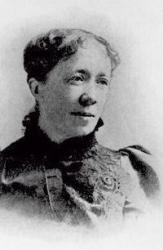
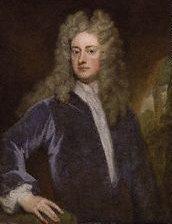
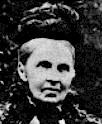
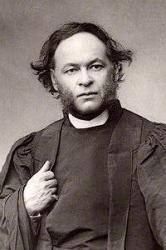

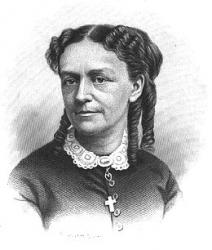
Export as CSV
W. H. W. Darley
1810 - 1872 Hymnal Number: 1012 Composer of "DARLEY" in The New Laudes Domini Born: September 9, 1801.
Died: July 31, 1872.
Buried: Laurel Hill Cemetery, Philadelphia, Pennsylvania.
William Henry Westray Darley was a multi-talented compiler and organist in pre-Civil War Philadelphia. He was something of a polymath. The son of two popular English actors, John and Eleanore Westray Darley, Willaim Henry was credited by Durang for arranging the score for Weber’s Der Feichütz, given at the Chesnut on March 18, 1825, and also taking the part of Wilhelm in that production. In 1839, Darley, now the organist at Saint Stephen’s, and listed in the city directories as a “professor of music,” began a co-authorship with John C. B. Stanbridge.
Darley was a director of Philadelphia’s most influential music society. He was also a member of the Anacreontic Society, a men’s musical club organized in 1833.
--excerpts from “Food for Apollo: Cultivated Music in Antebellum Philadelphia.”
By Dorothy T. Potter
W. H. W. Darley
Mary A. Lathbury

1841 - 1913 Hymnal Number: 99 Author of "Holy, holy, holy, Lord God of hosts" in The New Laudes Domini Lathbury, Mary Ann, was born in Manchester, Ontario County, New York, Aug. 10, 1841. Miss Lathbury writes somewhat extensively for the American religious periodical press, and is well and favourably known (see the Century Magazine, Jan., 1885, p. 342). Of her hymns which have come into common use we have:—
1. Break Thou the bread of life. Communion with God. A "Study Song" for the Chautauqua Literary and Scientific Circle, written in the summer of 1880. It is in Horder's (Eng.) Congregational Hymns, 1884.
2. Day is dying in the west. Evening. "Written at the request of the Rev. John H. Vincent, D.D., in the summer of 1880. It was a "Vesper Song," and has been frequently used in the responsive services of the Chautauqua Literary and Scientific Circle." It is in the Laudes Domini, N. Y., 1884.
For these details we are indebted to S. W. Duffield's English Hymns, &c, N. Y., 1886.
--John Julian, Dictionary of Hymnology (1907)
==================
Lathbury, Mary A., p. 640, i. Another hymn by this writer is, "Lift up, lift up thy voice with singing." [Praise to Christ), in Sankey's Sacred Songs & Solos, 1878.
--John Julian, Dictionary of Hymnology, Appendix, Part II (1907)
Mary A. Lathbury
Joseph Addison

1672 - 1719 Hymnal Number: 272 Author of "The spacious firmament on high" in The New Laudes Domini Addison, Joseph, born at Milston, near Amesbury, Wiltshire, May 1, 1672, was the son of the Rev. Lancelot Addison, sometime Dean of Lichfield, and author of Devotional Poems, &c, 1699. Addison was educated at the Charterhouse, and at Magdalen College, Oxford, graduating B.A. 1691 and M.A. 1693. Although intended for the Church, he gave himself to the study of law and politics, and soon attained, through powerful influence, to some important posts. He was successively a Commissioner of Appeals, an Under Secretary of State, Secretary to the Lord Lieutenant of Ireland, and Chief Secretary for Ireland. He married, in 1716, the Dowager Countess of Warwick, and died at Holland House, Kensington, June 17, 1719. Addison is most widely known through his contributions to The Spectator, The Toiler, The Guardian, and The Freeholder. To the first of these he contributed his hymns. His Cato, a tragedy, is well known and highly esteemed. Addison's claims to the authorship of the hymns usually ascribed to him, or to certain of them, have been called in question on two occasions. The first was the publication, by Captain Thompson, of certain of those hymns in his edition of the Works of Andrew Marvell, 1776, as the undoubted compositions of Marvell; and the second, a claim in the Athenaeum, July 10th, 1880, on behalf of the Rev. Richard Richmond. Fully to elucidate the subject it will be necessary, therefore, to give a chronological history of the hymns as they appeared in the Spectator from time to time.
i. The History of the Hymns in The Spectator. This, as furnished in successive numbers of the Spectator is :—
1. The first of these hymns appeared in the Spectator of Saturday, July 26, 1712, No. 441, in 4 stanzas of 6 lines. The article in which it appeared was on Divine Providence, signed “C." The hymn itself, "The Lord my pasture shall prepare," was introduced with these words:—
"David has very beautifully represented this steady reliance on God Almighty in his twenty-third psalm, which is a kind of pastoral hymn, and filled with those allusions which are usual in that kind of writing As the poetry is very exquisite, I shall present my readers with the following translation of it." (Orig. Broadsheet, Brit. Mus.)
2. The second hymn appeared in the Spectator on Saturday, Aug. 9, 1712, No. 453, in 13 st. of 4 1., and forms the conclusion of an essay on " Gratitude." It is also signed " C," and is thus introduced:—
“I have already obliged the public with some pieces of divine poetry which have fallen into my hands, and as they have met with the reception which they deserve, I shall, from time to time, communicate any work of the same nature which has not appeared in print, and may be acceptable to my readers." (Orig. Broadsheet, British Museum)
Then follows the hymn:—"When all Thy mercies, 0 my God."
3. The number of the Spectator for Tuesday, Aug. 19, 1712, No. 461, is composed of three parts. The first is an introductory paragraph by Addison, the second, an unsigned letter from Isaac Watts, together with a rendering by him of Ps. 114th; and the third, a letter from Steele. It is with the first two we have to deal. The opening paragraph by Addison is:—
“For want of time to substitute something else in the Boom of them, I am at present obliged to publish Compliments above my Desert in the following Letters. It is no small Satisfaction, to have given Occasion to ingenious Men to employ their Thoughts upon sacred Subjects from the Approbation of such Pieces of Poetry as they have seen in my Saturday's papers. I shall never publish Verse on that Day but what is written by the same Hand; yet shall I not accompany those Writings with Eulogiums, but leave them to speak for themselves." (Orig. Broadsheet, British Museum
Joseph Addison
Anonymous
Person Name: Anon. Hymnal Number: 439 Author of "Christ, the Lord is risen to-day" in The New Laudes Domini In some hymnals, the editors noted that a hymn's author is unknown to them, and so this artificial "person" entry is used to reflect that fact. Obviously, the hymns attributed to "Author Unknown" "Unknown" or "Anonymous" could have been written by many people over a span of many centuries.
Anonymous
Kate Hankey

1834 - 1911 Person Name: K. Hankey Hymnal Number: 582 Author of "Tell me the old, old story of unseen things above" in The New Laudes Domini Arabella Katherine Hankey (b. Clapham, England, 1834; d. Westminster, London, England, 1911) was the daughter of a wealthy banker and was associated with the Clapham sect of William Wilberforce, a group of prominent evangelical Anglicans from the Clapham area. This group helped to establish the British and Foreign Bible Society, promoted the abolition of slavery, and was involved in improving the lot of England's working classes. Hankey taught Bible classes for shop girls in London, visited the sick in local hospitals, and used the proceeds of her writings to support various mission causes. Her publications include Heart to Heart (1870) and The Old, Old Story and Other Verses (1879).
Bert Polman
===============
Hankey, Katharine, has published several hymns of great beauty and simplicity which are included in her:—
(1) The Old, Old Story, 1866; (2) The Old, Old Story, and other Verses, 1879; (3) Heart to Heart, 1870, enlarged in 1873 and 1876. In 1878 it was republished with music by the author.
Miss Hankey's hymns which have come into common use are:—
1. Advent tells us, Christ is near. The Christian Seasons. Written for the Sunday School of St. Peter's, Eaton Square, London, and printed on a card with music by the author.
2. I love to tell the story Of unseen things above. The love of Jesus. This is a cento from No. 3, and is given in Bliss's Gospel Songs, Cincinnati, 1874, and other American collections.
3. I saw Him leave His Father's throne. Lovest than Me? Written in 1868. It is No. 33 of the Old, Old Story, and other Verses, 1879.
4. Tell me the old, old story. This Life of Jesus in verse was written in two parts. Pt. i., "The Story Wanted," Jan. 29; and Pt. ii., "The Story Told," Nov. 18, 1866. It has since been published in several forms, and sometimes with expressive music by the author, and has also been translated into various languages, including Welsh, German, Italian, Spanish, &c. The form in which it is usually known is that in I. P. Sankey's Sacred Songs & Solos. This is Part i. slightly altered.
Miss Hankey's works contain many suitable hymns for Mission Services and Sunday Schools, and may be consulted both for words and music with advantage.
--John Julian, Dictionary of Hymnology (1907)
Kate Hankey
Hugh R. Haweis

1838 - 1901 Person Name: Hugh Reginald Haweis Hymnal Number: 1167 Author of "The homeland, O the homeland" in The New Laudes Domini Born: April 3, 1838, Egham, Surrey, England.
Died: January 29, 1901, St. Marylebone, London, England.
Haweis’ father was John Oliver Willyams Haweis, Canon of Chichester. Hugh attended Trinity College, Cambridge, and after graduation served under Garibaldi in the Italian war of independence. He was ordained in 1861 and was curate at Bethnal Green, Westminster and Stepney. In 1866, he became perpetual curate at St. James, Marylebone. His works include:
Music and Morals, 1871
My Musical Life, 1884
Travel and Talk, 1897
Old Violins, 1898
--www.hymntime.com/tch
Hugh R. Haweis
Grace W. Hinsdale

1833 - 1902 Hymnal Number: 801 Author of "My soul complete in Jesus stands" in The New Laudes Domini Hinsdale, Grace Webster, née Haddock, a Congregationalism daughter married to Theodore Hinsdale, a lawyer of New York, in 1850. Mrs. Hinsdale is a contributor to the periodical press, and has published Coming to the King, a Book of Daily Devotion for Children, 1865; republished in England as Daily Devotions for Children, 1867. Her hymns include :—
i. From Coming to the King, 1865.
1. A light streams downward from the sky. Heaven.
2. My soul complete in Jesus stands (1855). Safety in Jesus.
ii. From Schaff’s Christ in Song, N.Y., 1869.
3. Are there no wounds for me? Passiontide. Written April, 1868.
4. Jesus, the rays divine. Jesus ever present. Written July, 1868.
5. There was no angel 'midst the throng. Jesus, the Deliverer; or, Redemption. Written April, 1868. The hymn, "Jesus, Thou art my Lord, my God,” in the 1874 Supplement to the New Congregational Hymn Book, is composed of st. viii.-x., xv.-xvii., slightly altered, of this hymn.
6. Thou stand'st between the earth and heave. Virgin and Child. This poem was "written after viewing Raphael's Madonna di San Sisto, in the Royal Gallery of Dresden, Aug., 1867." (Christ in Song.) It is not suited for congregational use.
Her pen name is "Farin."
-- John Julian, Dictionary of Hymnology
Grace W. Hinsdale
Phoebe A. Hanaford

1829 - 1921 Person Name: Mrs. P. A. Hanaford Hymnal Number: 973 Author of "Cast thy bread upon the waters" in The New Laudes Domini Hanaford, Phoebe A., née Coffin, daughter of George F. Coffin, was born at Nantucket Island, May 6, 1829. Mrs. Hanaford is an Universalist, and one of their recognized ministers. Her hymn "Cast thy bread upon the waters" (Work and Wait), is in the Laudes Domini, N.Y., 1884, and other American collections.
--John Julian, Dictionary of Hymnology, Appendix, Part II (1907)
=================
Born: May 6, 1829, Nantucket Island, Massachusetts.
Died: June 2, 1921, Rochester, New York.
Daughter of Quaker ship owner George F. Coffin, Phoebe was cousin to feminist Lucretia Mott. A gifted writer, she was published in the local paper by the time she was a teenager. She studied Latin and mathematics and taught school for a few years, then in 1849 married Dr. Joseph H. Hanaford. The couple lived in Newton and Reading, Massachusetts, and had two children. Phoebe continued her literary efforts, producing poetry, children’s stories, essays, and biographies (her biography of Abraham Lincoln sold 20,000 copies). She also edited a Universalist magazine, and, urged by Rev. Olympia Brown, she eventually became a Universalist minister (the first woman ordained in New England). She served churches in Hingham and Waltham, Massachusetts; New Haven, Connecticut, and Jersey City, New Jersey. Her works include:
Life of George Peabody
Women of the Century (Boston, Massachusetts: B. B. Russell, 1877)
www.hymntime.com/tch
Phoebe A. Hanaford
H. J. M. Hope
1809 - 1872 Person Name: Henry J. M. Hope Hymnal Number: 690 Author of "Jesus is mine" in The New Laudes Domini Hope, Henry Joy McCracken, a bookbinder, son of James Hope, was born near Belfast, Ireland, in 1809; was in the employ of Messrs. Chambers, Dublin, for many years, and died at Shanemagowston, Dunadry, County Antrim, Ireland, Jan. 19, 1872. His hymn, "Now I have found a Friend" (Jesus the Friend) was privately printed in 1852. It seems to have been suggested by Mrs. Bonar's "Pass away, earthly joy" (p. 162, i.), stanza iv. of which is sometimes associated with it.
--John Julian, Dictionary of Hymnology, Appendix, Part II (1907)
H. J. M. Hope
Alexander Pirie
1737 - 1804 Hymnal Number: 465 Author of "Come, let us join our songs of praise" in The New Laudes Domini
Alexander Pirie


 My Starred Hymns
My Starred Hymns

